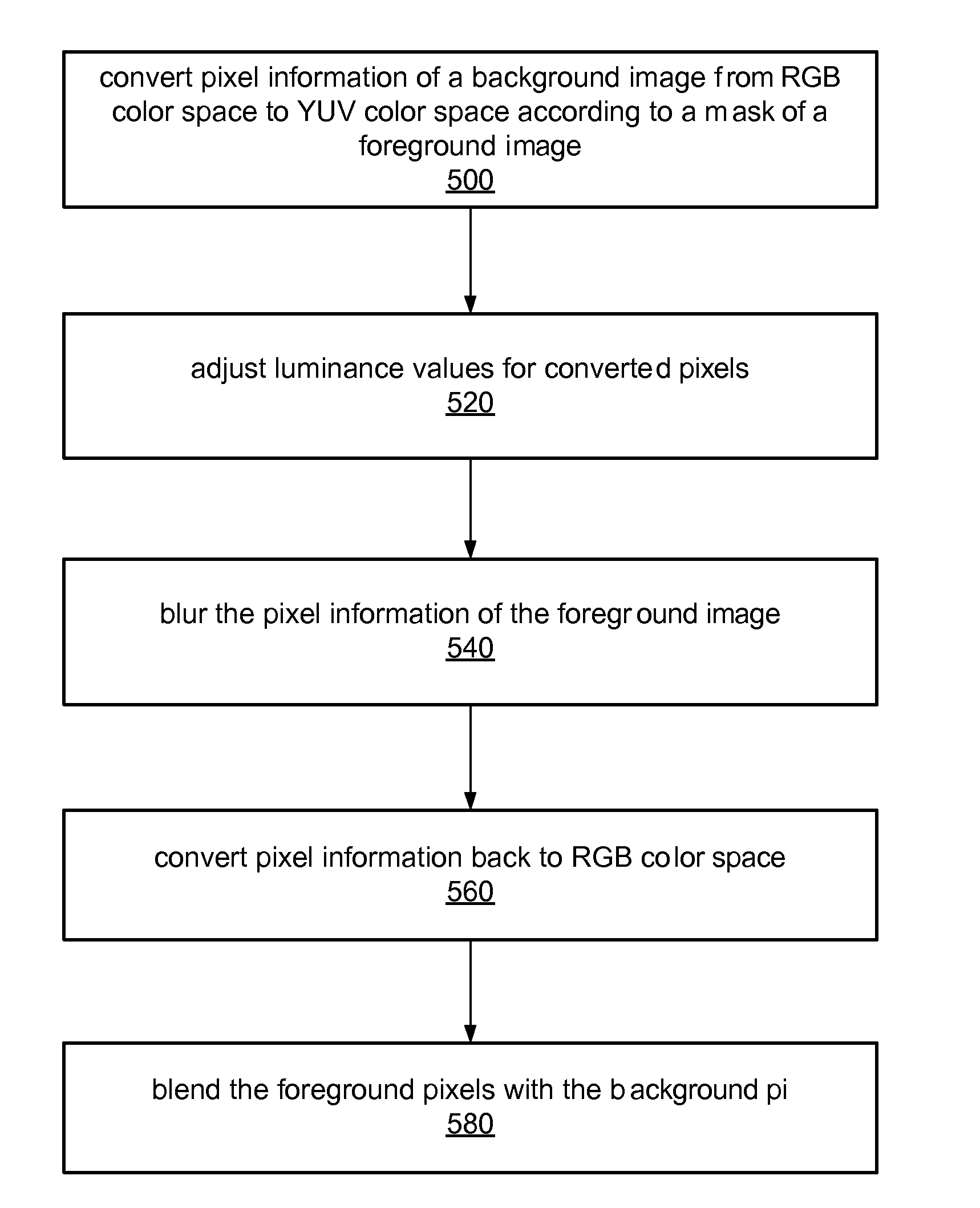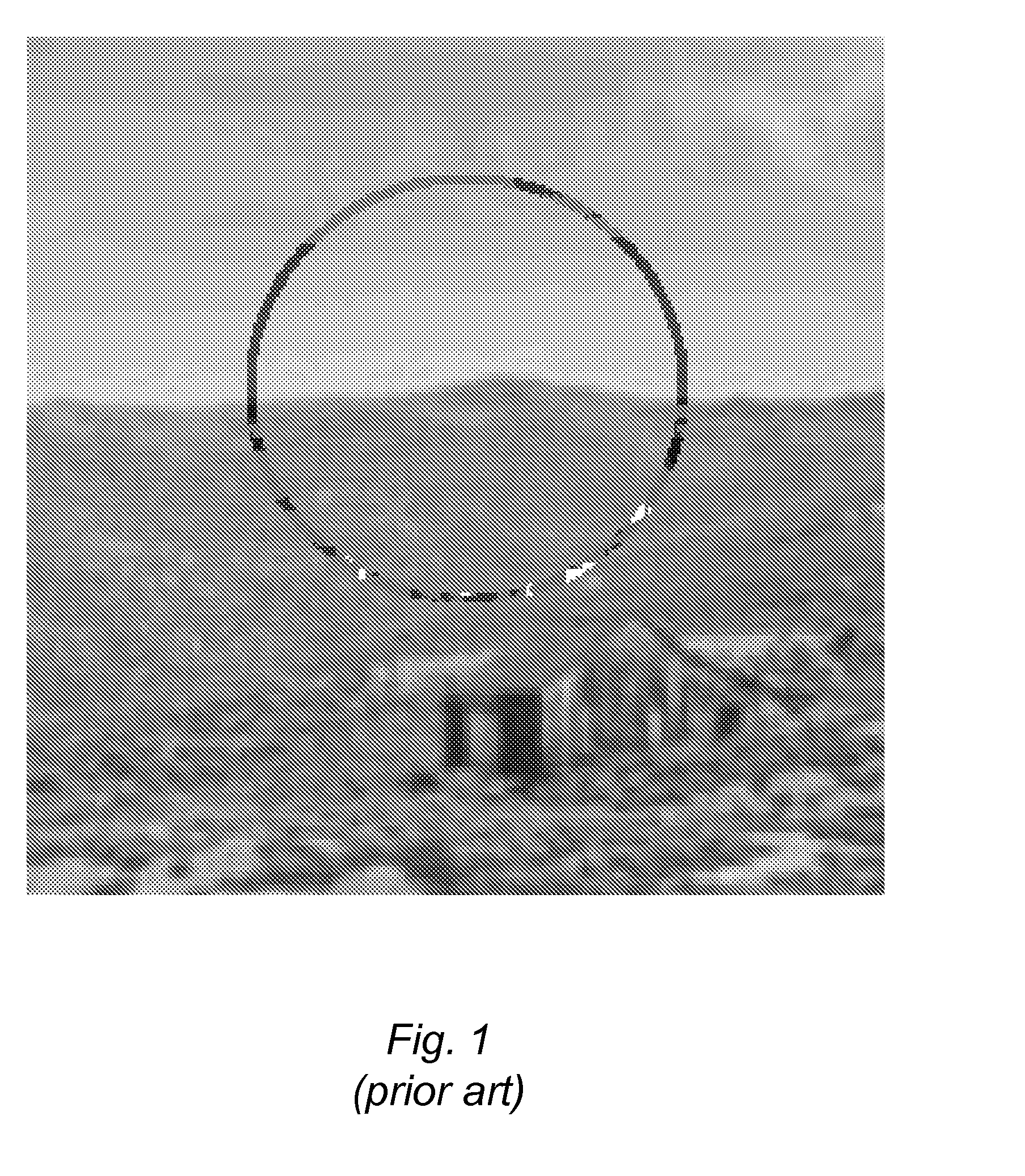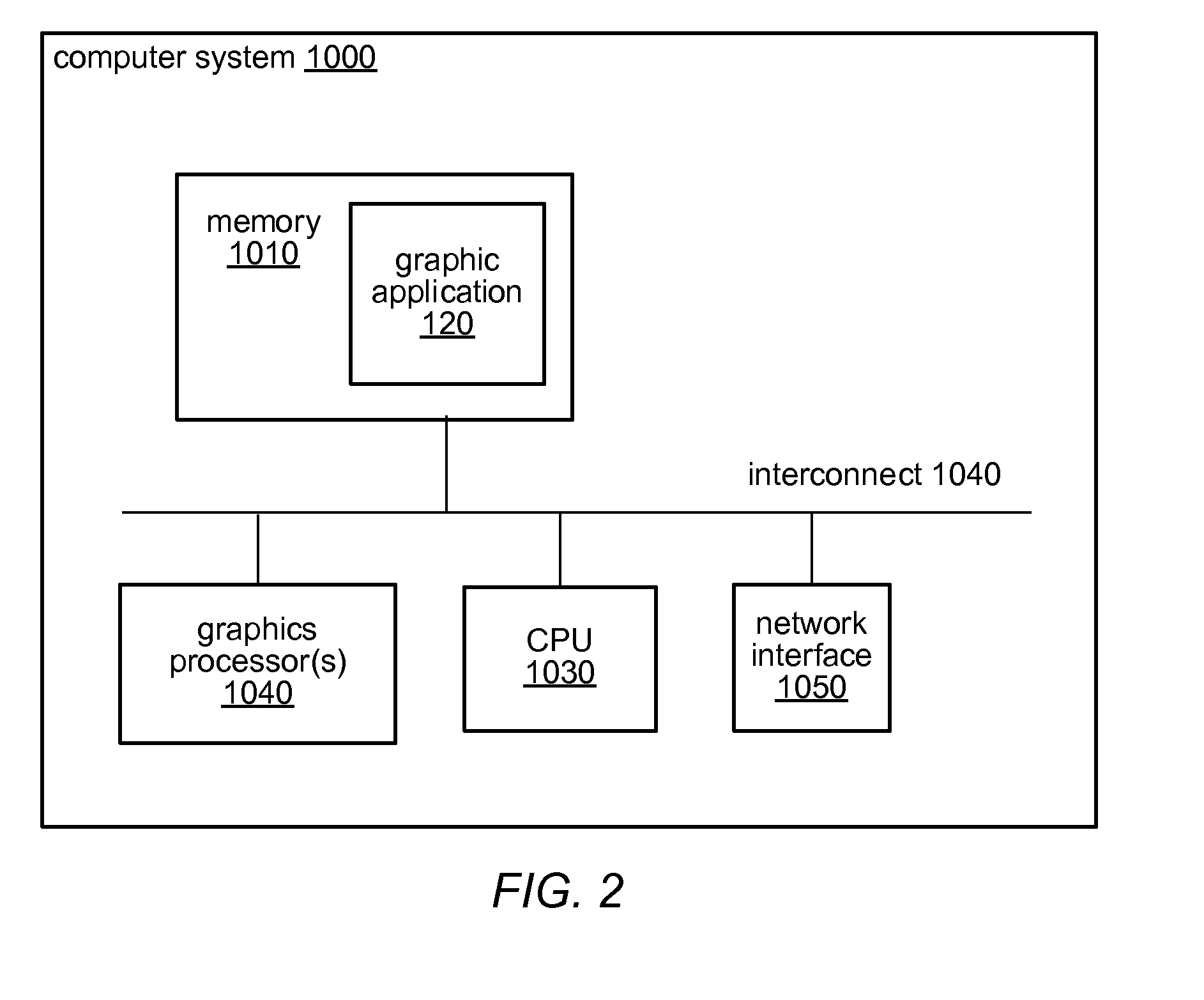Method and System for Dynamic, Luminance-Based Color Contrasting in a Region of Interest in a Graphic Image
a dynamic, luminance-based color contrast and region-of-interest technology, applied in the field of computer systems, can solve the problems of increasing the amount of background image that is being covered by the foreground image element, user difficulty in working with an image, and increasing the amount of background image that is being obscured by the background image, so as to reduce the amount of background image obscured, increase the contrast, and soften the edges of the foreground image
- Summary
- Abstract
- Description
- Claims
- Application Information
AI Technical Summary
Benefits of technology
Problems solved by technology
Method used
Image
Examples
Embodiment Construction
[0018]As described above, traditionally cursors and other dynamic foreground images are drawing using an XOR drawing mode. FIG. 1 is an image illustrating a circle drawn over a landscape background using an XOR drawing mode, according to the prior art. As can be seen in FIG. 1, the XOR drawing may result in color changes or shifts depending upon the exact color of the background and foreground at any particular pixel. While the XOR drawing illustrated in FIG. 1 may result in contrasting colors for the circle, the color changes from one area of the circle to another may cause the overall image to be visually disturbing, not pleasing to the eye, or even wrong. Such color shifts (also called chroma shifts or chroma crawling) may even interfere with a user's perception of the colors in the background image. For example, if a user is adjusting the colors of the background image the cursor used to select pixels of the background image for adjustment may include various colors and color sh...
PUM
 Login to View More
Login to View More Abstract
Description
Claims
Application Information
 Login to View More
Login to View More - R&D
- Intellectual Property
- Life Sciences
- Materials
- Tech Scout
- Unparalleled Data Quality
- Higher Quality Content
- 60% Fewer Hallucinations
Browse by: Latest US Patents, China's latest patents, Technical Efficacy Thesaurus, Application Domain, Technology Topic, Popular Technical Reports.
© 2025 PatSnap. All rights reserved.Legal|Privacy policy|Modern Slavery Act Transparency Statement|Sitemap|About US| Contact US: help@patsnap.com



